Studio One has been around for fourteen years, slowly but surely staking its place in the DAW market, thanks to its good ideas and innovations. However, with this seventh version, it seems that Presonus is upping the ante by creating a DAW that the competition will have a tough time keeping up with.
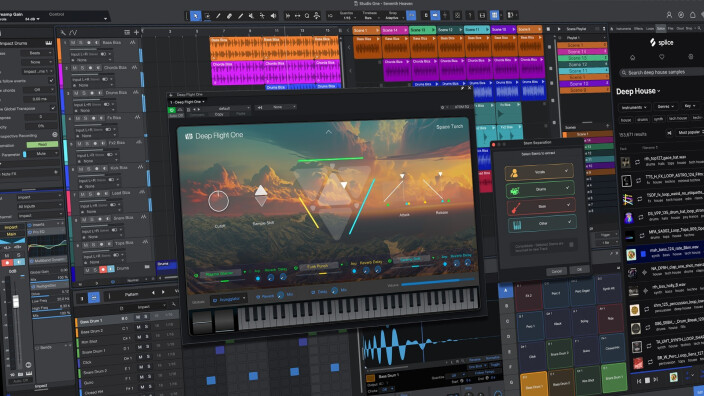
Before discussing the new features of this latest version, we’d like to emphasize the radical change in marketing strategy recently announced by Presonus: no longer are there different versions of Studio One ranging from roughly 100 to 400 euros (100–400 dollars), the range has been simplified to the extreme. Gone are the Prime and Artist versions; all that remains is a single version called Studio One Pro, available for 200 euros (200 dollars). Compared with Cubase at €555 ($579) and Logic at €230 ($199), that’s a hefty price tag, considering that only the troublemaker Reaper can boast a lower price.
However, the novelty is not just a question of price. Instead of offering a new version every two years, the publisher now claims to offer three to four updates per year, in a logic reminiscent of agile development (a software development technique that breaks the process into smaller chunks). However, it should be pointed out that the purchase of a full version of the software (which can still be rented via the “Studio One Pro +” subscription) gives you access to one year’s worth of updates. After this period, it will cost you €150/$150 to access another year of new features.
It’s obviously difficult to judge the relevance of the system without having an idea of the content of future updates. It’s also worth noting that renewing access to updates every year will cost more than the old system. However, the €200 ($200) price tag is still an excellent thing for first-time buyers and could well drive down the price of the competition, as well as enable Studio One to gain market share: it’s in this sense that we can start wondering if this version might be a “game changer.” And it should gain all the more, as this new version offers quite a few attractive new features.
Stairway to Seven
The first change we notice on installing this new version is its bright blue icon. A double-click, and we’re back on familiar ground, however, as the overall design of the user interface hasn’t changed greatly except for a few new icons or commands appearing here and there.
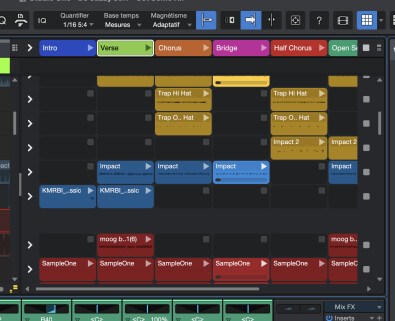
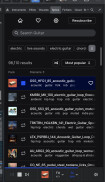
Browsing is then done according to different criteria, with the right tempo and key for your project, as well as a preview. Once you’ve found what you’re looking for, a simple drag and drop is all it takes to retrieve the file: it’s very well integrated and thought out, provided you have a subscription to Splice, of course.
Golden Loops
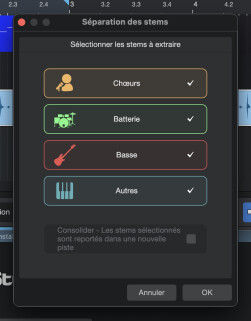
Right-clicking on an audio file brings up the “Separate stems” command, which lets you separate the content into four layers: Vocals, Drums, Bass and Other. And unsurprisingly, it works just as well as the separation features in other software, because they all use the same Open Source algorithms. It’s obviously a far cry from the possibilities offered in this respect by Spectralayers, whose specialty it is, but there’s nothing to stop you from using, say, Melodyne via ARA, to demix ever further. In any case, it’s a very good addition that will allow you to recover loops like acapellas. Hip hop fans will appreciate it.
While we’re on the subject of loops, let’s also note the new ability to define an audio or MIDI clip as a “loop, ” which can be done by simply right-clicking on the element or by dragging directly from the clip’s bottom right edge — something rather similar to what Acid invented in its day. Here’s a great time-saving feature for building drafts very quickly, which Studio One really lacked.
And while we’re on the subject of what was missing, let’s look at the included plug-ins, which, instrument-wise, have always been Studio One’s weakness.
Buried Synth
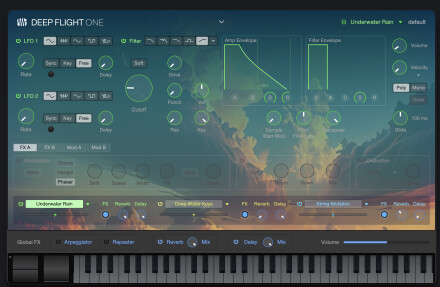
The sounds offered by these two newcomers are nonetheless worthy of interest, even if they hardly overcome Studio One’s paucity of virtual instruments: still no wavetable synth, still no granular synth, still no FM synth, and still no physical modeling synth. Presence is still the only solution for all acoustic and electro-acoustic instruments. While some of its banks are decent, many others fall far short of what’s available on the market or in competitor DAW bundles. We’re a long way from the richness of Logic on this point.
Let’s note, though, like the Batch Converter, Presence finally comes with its editor, formerly a paid add-on, so we can hope that the community will seize on it and develop some interesting banks.
While we’re on the subject of plug-ins, let’s note that Studio One now supports the CLAP format (CLever Audio Plug-in, an open source format), which we’d love to see supplant the rather too proprietary VST and AU formats, but which for the time being remains in its infancy.
But also… and again…
And that’s not all because dozens of little things have appeared or evolved. I won’t mention them all here but will focus on the most noteworthy, starting with the “Global Transpose” function. It’s something I’ve been looking forward to, as it lets you change the key of an entire song in one click without having to transpose track by track. What a time-saver when it comes to, for example, adapting a song to a singer’s range.
Song tempo detection has also greatly improved. Studio One is now capable of detecting tempo fluctuations, a joy when adding MIDI sequences to an audio recording with a slightly shifting tempo.


I could mention the ability to detach the browser window, making it full-screen for those with two monitors or Ableton Link compatibility. In short, 1001 little things have evolved to such an extent that I invite you to consult the software changelog in detail. There’s no doubt, however, that this seventh version doesn’t disappoint, particularly in that its price has been halved. Also, while Studio One doesn’t yet have an instrument bundle as accomplished as its competitors, it does have a lot to offer the competition: it’s available on Mac and PC (an important criterion for those who don’t want to be wedded to one platform), and above all has a hardware/software ecosystem that most lack. From audio interfaces to ATOM controllers and Faderport control surfaces, Presonus offers solutions that have no equivalent except from AVID at prices that are higher.
Overall, Studio One is doing better than ever: we’re delighted and can’t wait to see what’s next…



